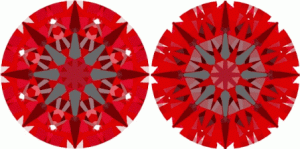Sorry for the double post , I hit submit by mistake. Defimitely not one of my more brilliant moments !!
I took another look at this diamond today :
1.03 Round
D Color
SI1 Clarity
Depth 61.8
Table 56.0
Crown 33.3
Pavillion 41.1
VG Symmetry
EX Polish
GIA Cert dated August 2002
This stone is completely eye clean , there is however a dark crystal that you can easily see with a 10 x loupe at the 1
 0 position. The asking price for this stone is 5700.00 plus 6% sales tax. Any advice would be GREATLY appreicated . Again , my apologies for the double post !
0 position. The asking price for this stone is 5700.00 plus 6% sales tax. Any advice would be GREATLY appreicated . Again , my apologies for the double post !
I took another look at this diamond today :
1.03 Round
D Color
SI1 Clarity
Depth 61.8
Table 56.0
Crown 33.3
Pavillion 41.1
VG Symmetry
EX Polish
GIA Cert dated August 2002
This stone is completely eye clean , there is however a dark crystal that you can easily see with a 10 x loupe at the 1











300x240.png)